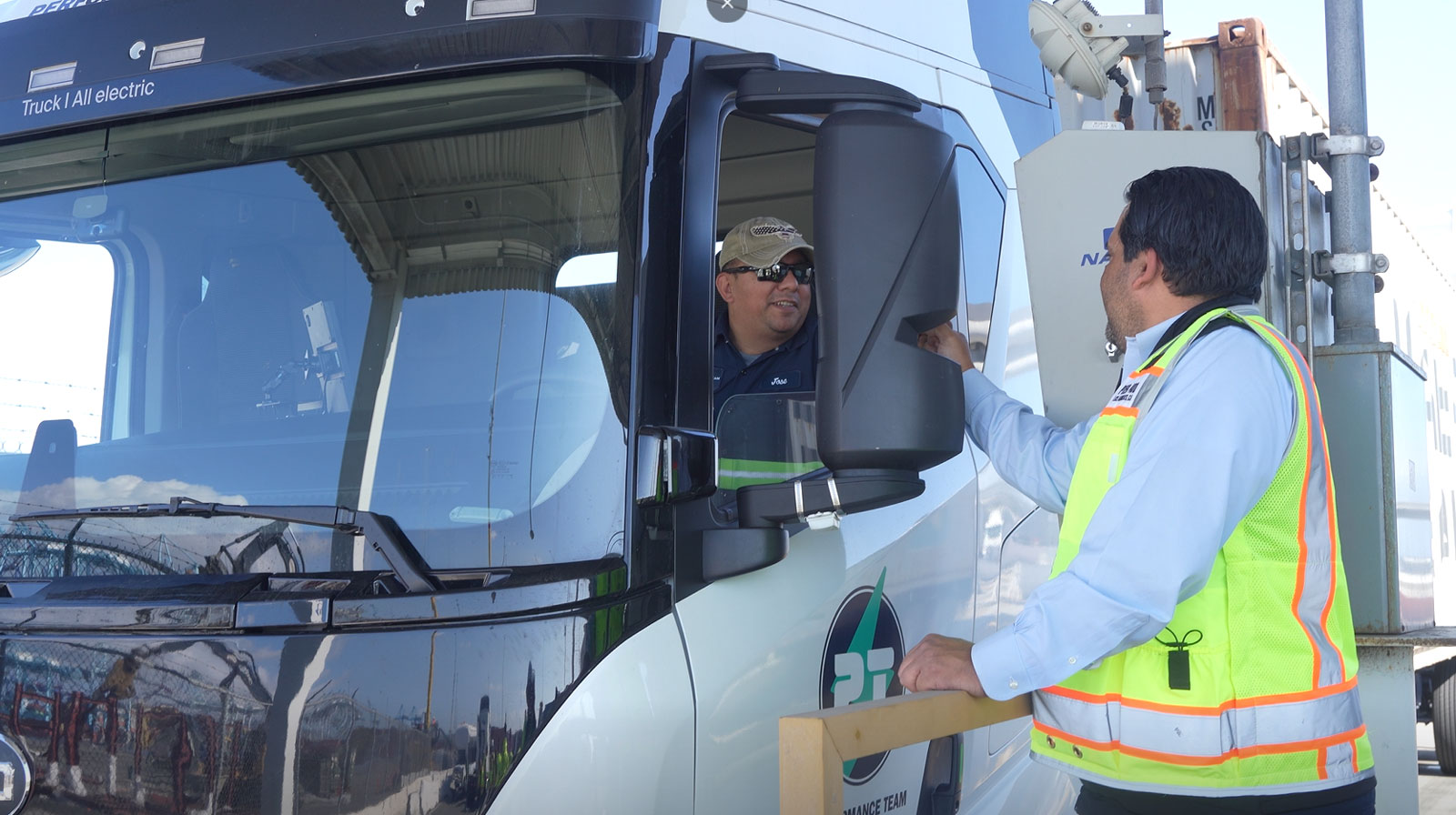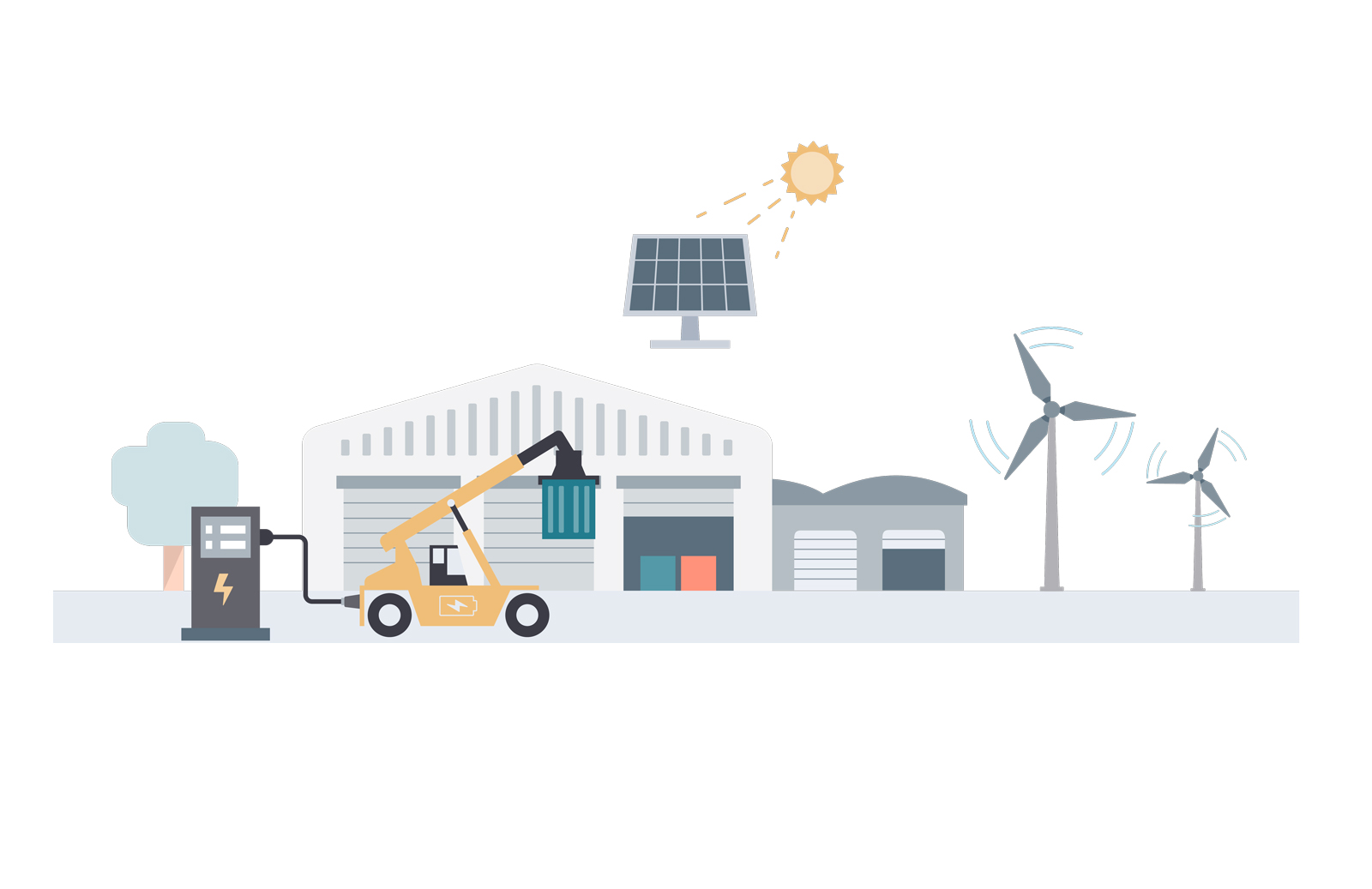APM Terminals has made an industry-leading global commitment to be fully net zero by 2040 across all of its terminals. At APM Terminals Los Angeles Pier 400 the bar has been set even higher. As one of the most environmentally advanced marine terminals in San Pedro Bay, we have ambitions to be the most environmentally responsible and sustainable container terminal operator on the U.S. West Coast by the end of 2030.
The terminal is on track to achieve net zero emissions ahead of the 2030 Port of Los Angeles deadline, established in the Clean Air Action Plan. In doing so we’ll also ensure a healthier and safer environment for employees and the local community living close to the port. Our achievements will also help our customers meet their sustainability targets, and save them time and money, with the most competitive service at the port, transparency in our systems and visibility and accuracy on their cargo.

As a local resident of Long Beach, decarbonization efforts at APM Terminals Pier 400 Los Angeles are very close to my heart. Improved air quality will have a tangible influence on the health of my family. And the terminal’s reduction in greenhouse gas emissions will make an important contribution to limiting the impacts of climate change, which is vital for the future of my children and their children to come.
Industry Partner for Decarbonization
Based on researched commissioned by APM Terminals a white paper was published that concludes that battery electric container handling equipment (CHE) can help drive net zero ports within this decade. Thus, we have mobilized efforts across the whole industry to accelerate the adoption of battery-electric CHE.
In 2023, APM Terminals established The Zero Emission Port Alliance (ZEPA) - an industry-wide strategic coalition with the goal of accelerating the journey to zero emissions for container handling equipment (CHE) on ports. Based on research from the recent whitepaper developed jointly by APM Terminals and DP World, the alliance is working to increase industry wide-adoption of battery-electric container handling equipment by making it more affordable, attractive and accessible. This will be achieved through:
- Driving scaled up production capacity and shorter lead times of battery electric CHE by manufacturers & reduce product costs
- Bringing down the cost of batteries and charging solutions and simplify implementation through standardization
- Facilitate cost-efficient roll-out of power infrastructure for battery electric CHE, shore power and other cargo segments
- Creating better market conditions and help accelerate the adoption of untethered battery electric CHE


 As a local resident of Long Beach, decarbonization efforts at APM Terminals Pier 400 Los Angeles are very close to my heart. Improved air quality will have a tangible influence on the health of my family. And the terminal’s reduction in greenhouse gas emissions will make an important contribution to limiting the impacts of climate change, which is vital for the future of my children and their children to come.
As a local resident of Long Beach, decarbonization efforts at APM Terminals Pier 400 Los Angeles are very close to my heart. Improved air quality will have a tangible influence on the health of my family. And the terminal’s reduction in greenhouse gas emissions will make an important contribution to limiting the impacts of climate change, which is vital for the future of my children and their children to come.

 The transition to Trucker Exchange Lanes APM Terminals Pier 400 has eliminated one third of on-terminal truck miles driven and greatly reduced truck idling times.
The transition to Trucker Exchange Lanes APM Terminals Pier 400 has eliminated one third of on-terminal truck miles driven and greatly reduced truck idling times.
 APM Terminals Pier 400 Clean Truck Express lane was introduced in December 2023 to support the transition to zero and near-zero emissions drayage trucks. It provides express access to trucks meeting the definition of Clean Truck in the Port of Los Angeles’
APM Terminals Pier 400 Clean Truck Express lane was introduced in December 2023 to support the transition to zero and near-zero emissions drayage trucks. It provides express access to trucks meeting the definition of Clean Truck in the Port of Los Angeles’  In recent years Pier 400 replaced 169 older diesel-powered cargo handling equipment (including rubber-tired gantry cranes, terminal tractors, top handlers and empty handlers) with 132 new hybrid-electric straddle carriers.
In recent years Pier 400 replaced 169 older diesel-powered cargo handling equipment (including rubber-tired gantry cranes, terminal tractors, top handlers and empty handlers) with 132 new hybrid-electric straddle carriers.  We have installed electric vehicle charging points in our public parking areas, capable of charging up to 8 electric vehicles at any one time.
We have installed electric vehicle charging points in our public parking areas, capable of charging up to 8 electric vehicles at any one time.  To support our electrification plans, the power supply infrastructure at our terminal needs to be upgraded to meet almost triple our current electrical demand. Initial studies show that this will take approximately five years.
To support our electrification plans, the power supply infrastructure at our terminal needs to be upgraded to meet almost triple our current electrical demand. Initial studies show that this will take approximately five years.

